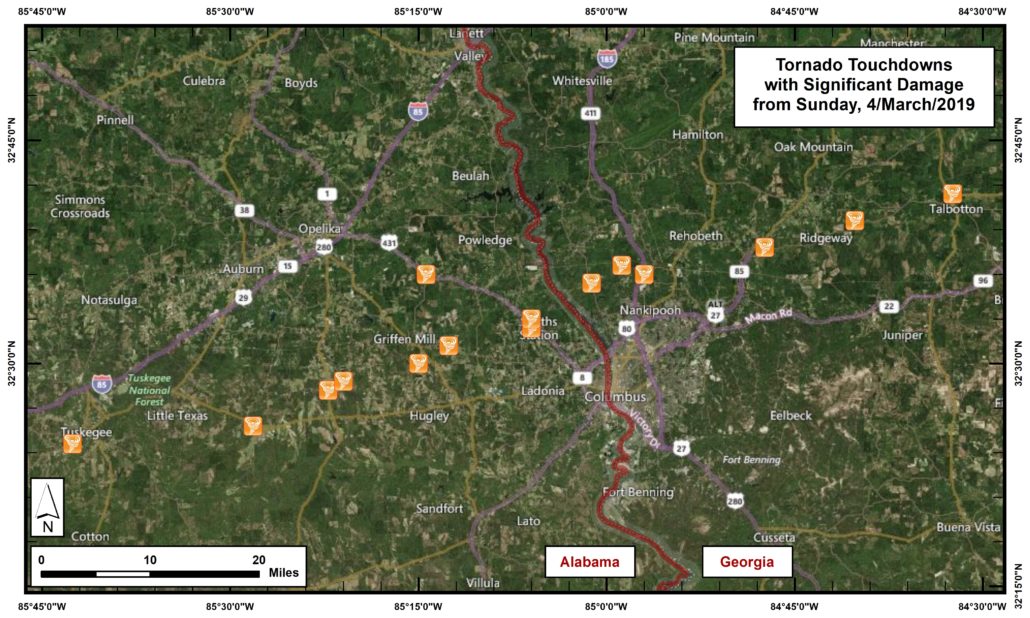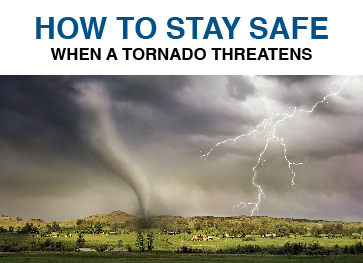Over 30 tornadoes tore through Alabama, Georgia, and Florida on Sunday afternoon. Massive damage and numerous injuries and deaths have been reported across the Southeast US. Nearly 20 of these tornadoes were reported along a track that stretched east from Tuskegee, Alabama, to Macon, Georgia.
Lee County in Alabama took the brunt of the damage, with back to back tornadoes cutting a half-mile wide path of destruction just south of the rural community of Opelika. The tornadoes that struck Lee County are still being analyzed but are expected to be graded as EF-3s or higher. The tornadoes damaged cell towers, businesses, and roadways and left homes scraped down to their foundations. Many of these destroyed structures were mobile homes, which rarely have any protection from the catastrophic winds. As of Monday morning, crews are still searching for survivors with some 20 people still left unaccounted. Sadly, the tornadoes have taken at least 23 lives, but more are feared lost.

Tornado Path.
Tornado Safety
Although tornadoes are most common in the Midwest and the Southeast, they can happen anywhere. If a Tornado Warning is issued for your area, it means it means it’s time to act. A Tornado Warning is an official alert that a tornado has been reported or that weather radar indicates that one in imminent. If you find yourself in an area effected by Tornado Warning it is time to act quickly. Ready.gov offers these life saving tips:
- If you can safely get to a sturdy building, then do so immediately.
- Go to a safe room, basement, or storm cellar.
- If you are in a building with no basement, then get to a small interior room on the lowest level.
- Stay away from windows, doors, and outside walls.
- Do not get under an overpass or bridge. You’re safer in a low, flat location.
- Watch out for flying debris that can cause injury or death.
- Use your arms to protect your head and neck

Tornado Safety Tips from Ready.gov
For up to date information please visit
National Weather Service Twitter Feed





One Comment